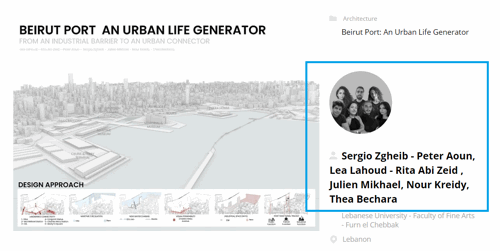Campus Interflow

Project idea
The Campus Interflow project was conceived as a response to the need for a modern, sustainable, and socially inclusive campus for the Cracow University of Technology, located on the post-industrial grounds of the former airport in Czyżyny. The project’s core idea is to harmoniously integrate the built environment with nature while fostering academic, cultural, and social interactions. The historical runway becomes the symbolic and functional backbone of the campus, reinterpreted as a green linear axis that connects different zones and users. The concept introduces the principle of "planarity," allowing buildings to blend into the terrain and preserve maximum green areas on the surface. The main goal of the project is to create a dynamic, multifunctional academic district that not only serves the educational needs of the university but also offers high-quality living, recreational, and cultural spaces for a diverse community of students, staff, residents, and visitors. The design prioritizes sustainable transportation solutions, with a focus on pedestrian and bicycle mobility, public transit access through a new metro line and tram extension, and the minimization of car traffic via underground routes. Social integration is reinforced through shared spaces such as community gardens, orchards, integration squares, cultural event areas, and recreational facilities. The project aims to establish a vibrant urban environment where education, nature, and community coexist, reflecting contemporary urban planning values and contributing to the future growth and identity of Cracow.
Project description
The Campus Interflow project offers a comprehensive urban solution that transforms the post-airport area in Czyżyny into a vibrant academic and social hub for the Cracow University of Technology. The project scope includes the creation of a multifunctional campus center with an amphitheater, club building, and commercial spaces designed to serve both university members and city residents. A new residential district provides housing for students and external residents, supporting social diversity within the campus. A key feature is the transformation of the historical airport runway into a linear park that preserves historical elements while incorporating green and recreational functions. Community gardens and orchards are introduced to encourage social interaction, collective gardening, and outdoor activities. Vehicular traffic is relocated underground to maintain continuity of green areas and pedestrian zones. Public transportation is strengthened with the introduction of a new metro station and the extension of the tram system along Stella-Sawickiego Street. Dedicated event spaces are designed for cultural, academic, and student events, including major open-air festivals such as Czyżynalia. The project also focuses on the full integration of preserved and new biologically active green areas to create a continuous ecological landscape, strengthening the connection between the campus and the wider urban fabric of Cracow.
Technical information
The Campus Interflow project, located in the Czyżyny district of Cracow, Poland, covers the redevelopment of a former airport area into a modern, multifunctional university campus for the Cracow University of Technology. The project area extends over several dozen hectares and integrates multiple functional zones including educational, residential, recreational, cultural, and service areas. The educational zone consists of the existing Faculty of Mechanical Engineering as well as newly designed university buildings. The residential zone includes both new student dormitories and apartments intended for external residents. The service and office zone extends the existing Comarch office complex with additional office and commercial spaces. The project emphasizes extensive green spaces that are fully integrated into the built environment, combining preserved vegetation with newly designed parks, linear green corridors, sports fields, water reservoirs, orchards, and community gardens. The recreational facilities include an open-air amphitheater located at level -1, a multifunctional event plaza for concerts and festivals, as well as a newly designed Kwadrat II Club. The transport infrastructure is based on sustainable solutions prioritizing pedestrian and bicycle traffic. Underground vehicular routes ensure minimal disturbance to the surface green areas. A new metro station is proposed at Stella-Sawickiego Street, together with a tram network extension with four stops located throughout the campus. A pedestrian and bicycle bridge over Stella-Sawickiego Street ensures safe integration of both campus sides. The project applies the concept of architectural "planarity," allowing built structures to blend into the terrain without sacrificing green spaces. Supporting infrastructure includes community gardens with dedicated irrigation systems, retention water basins, and integrated technical facilities for large-scale public events.




